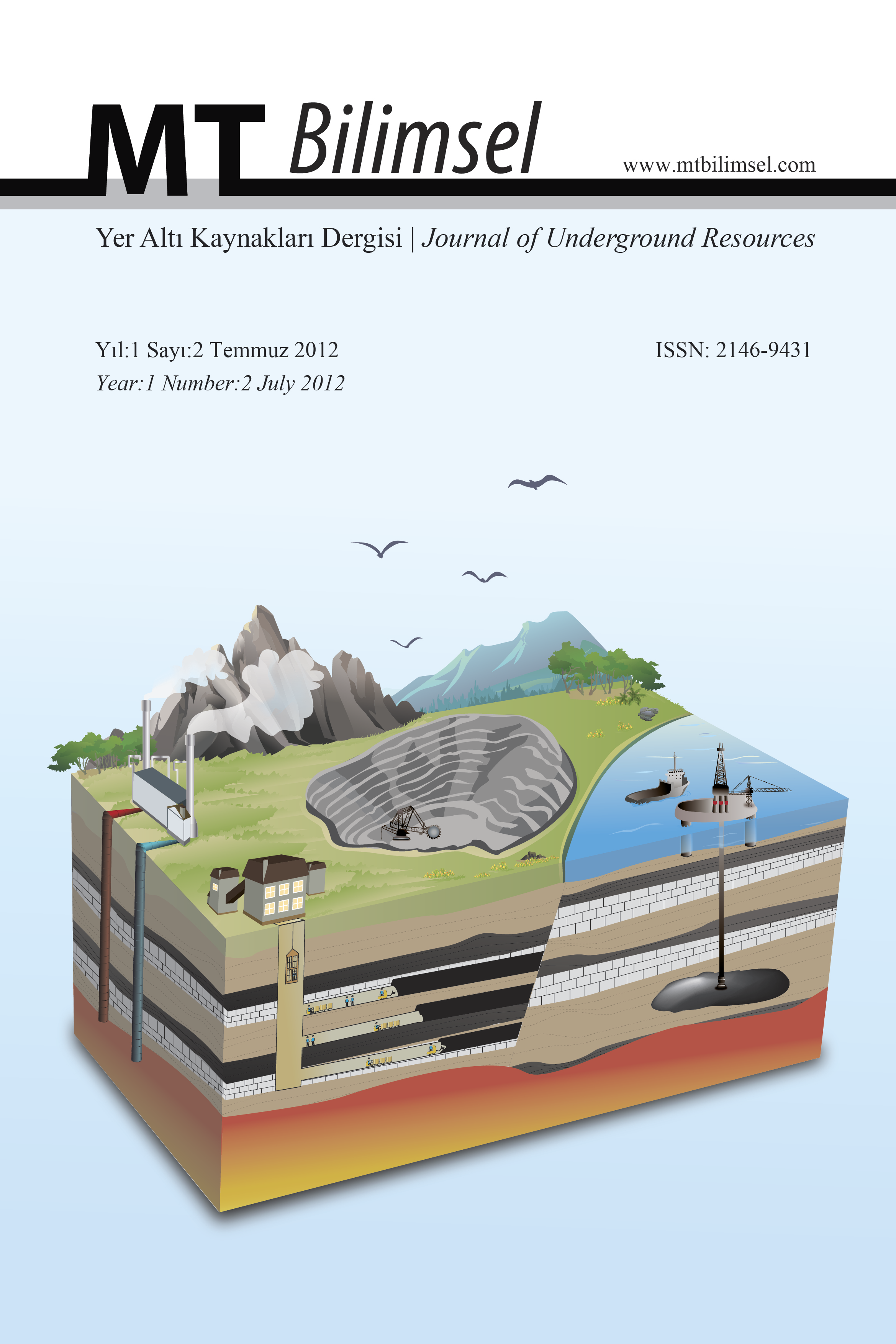Kalsiyum Karbonatın (CaCO3) Mikron Altı/Nano Boyutta Yaş Öğütülmesi: Öğütme Parametreleri ve Pülp StabilitesiAşınma İndeksi Arasındaki İlişkilerin İncelenmesi
Mineral endüstrisi, boya, ilaç, kağıt gibi çeşitli sektörlerin çok ince tozlara olan taleplerindeki artış, yaş yöntemle çok ince öğütmenin giderek artan bir şekilde uygulanmasını zorunlu kılmaktadır. Çok ince öğütmede kullanılan değirmenler ise genellikle karıştırmalı bilyalı değirmenlerdir. Karıştırmalı bilyalı değirmenler çok ince ve mikron altı tane boyutu elde edilmesinde diğer değirmenlere göre en uygun olanıdır. Bu değirmenler ile yapılan çok ince öğütme işleminde enerji tüketimi oldukça yüksek olmakta ve değirmenin optimum işletme parametrelerinin belirlenerek enerji tüketiminin optimize edilmesi gerekmektedir. Öte yandan, malzemelerin yaş öğütülmesinde pülp reolojisinin etkinliği bilinmektedir. Bu yüzden, pülp reolojisinin öğütmeye etkisi özellikle önem kazanmaktadır. Bu derlemede; karıştırmalı bilyalı değirmenle gerçekleştirilen çok ince yaş öğütmede, proses parametreleri ve pülp reolojisi sunulmaktadır.
Wet Grinding to Submicron/Nano Particle Size of Calcium Carbonate (CaCO3): Process Parameters and Slurry Stability
With an increasing demand for super fine powders for industries, wet ultra fine grinding has been increasingly used in various fields, such as minerals, ceramic materials, pigments, pharmaceutics and paper-making. Most of the mills used in ultra fine grinding are stirred ball mills. Stirred ball mills are better suited than other mills for the production of ultra fine and submicron-size particles. Ultra fine and submicron grinding by means of stirred ball mill is a highly energy-intensive process, and it is necessary to optimize energy usage by determining the optimum operational parameters for the mill. On the other hand, it has been known that slurry rheology affects the wet milling of materials. Therefore, the effect of slurry rheology to the milling becomes of particular importance. The aim of this review is to present some of the previous work with respect to the process parameters and slurry rheology in ultra fine wet grinding with stirred ball milling
